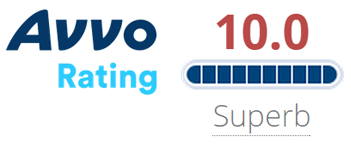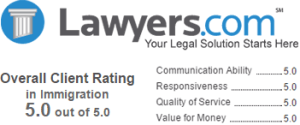
There are various types of temporary worker visas. Some are for professionals, others for executives and managers and still others for skilled and semi-skilled workers.
There are also visas for investors, for religious workers, trainees, medical residents, fashion models and a wide variety of other types of temporary workers.
Some of these visa types require an employer to submit a petition to the USCIS. Others do not. However, all temporary workers require employer sponsorship.
Their children and spouses can usually obtain temporary visas to come to the US with the principal worker. Sometimes, the spouse of a temporary worker may even be qualified for a work permit.
If the person who wants to obtain temporary worker status is legally residing in the US, they may be able to change their immigration status without having to leave the US. If they are residing abroad, they must apply for a temporary worker visa at the appropriate US Embassy or Consulate in their country.
 “Mr. Shusterman was very honest with my brother and I about what could be done, and what could not be done. His previous work with INS makes him an expert in immigration law, which can be quite cumbersome and complicated. Thanks to him and his hard working staff, I am now working in the field of my choice and finally realizing my dreams!…” (More client reviews…)
“Mr. Shusterman was very honest with my brother and I about what could be done, and what could not be done. His previous work with INS makes him an expert in immigration law, which can be quite cumbersome and complicated. Thanks to him and his hard working staff, I am now working in the field of my choice and finally realizing my dreams!…” (More client reviews…)
Skype Consultations Available!![]()
The main nonimmigrant temporary worker classifications are listed in the table below. Click on he category in the left hand column below for more information.
Temporary (Nonimmigrant) Worker Classification
| Nonimmigrant Classification for a Temporary Worker | Description | Nonimmigrant Classification for Dependant Spouses and Children of a Temporary Worker |
| CW-1 | CNMI-Only transitional worker | CW-2 |
| E-1 | Treaty traders and qualified employees. | E-13 |
| E-2 | Treaty investors and qualified employees. | E-23 |
| Long-term foreign investors in the CNMI | E-2C | |
| E-3 | Certain “specialty occupation” professionals from Australia. | E-33 |
| H-1B | Workers in a specialty occupation and the following sub-classifications:
|
H-4 |
| H-1C2 | Registered nurses working in a health professional shortage area as determined by the U.S. Department of Labor. | H-4 |
| H-2A | Temporary or seasonal agricultural workers. | H-4 |
| H-2B | Temporary non-agricultural workers. | H-4 |
| H-3 | Trainees other than medical or academic. This classification also applies to practical training in the education of handicapped children. | H-4 |
| I | Representatives of foreign press, radio, film or other foreign information media. | I |
| L-1A | Intracompany transferees in managerial or executive positions. | L-23 |
| L-1B | Intracompany transferees in positions utilizing specialized knowledge. | L-23 |
| O-1 | Persons with extraordinary ability in sciences, arts, education, business, or athletics and motion picture or TV production. | O-3 |
| O-2 | Persons accompanying solely to assist an O-1 nonimmigrant. | O-3 |
| P-1A | Internationally recognized athletes. | P-4 |
| P-1B | Internationally recognized entertainers or members of internationally recognized entertainment groups. | P-4 |
| P-2 | Individual performer or part of a group entering to perform under a reciprocal exchange program. | P-4 |
| P-3 | Artists or entertainers, either an individual or group, to perform, teach, or coach under a program that is culturally unique. | P-4 |
| Q-1 | Persons participating in an international cultural exchange program for the purpose of providing practical training, employment, and to share the history, culture, and traditions of the alien’s home country. | Not Applicable4 |
| R-1 | Religious workers. | R-2 |
| TN | North American Free Trade Agreement (NAFTA) temporary professionals from Mexico and Canada. | TD |
1 Only a few nonimmigrant classifications allow you to obtain permission work in this country without an employer having first filed a petition on your behalf. Such classifications include the nonimmigrant E-1, E-2, E-3 and TN classifications, as well as, in certain instances, the F-1 and M-1 student and J-1 exchange visitor classifications.
2 The H-1C nonimmigrant classification expired on December 20, 2009.
3 E and L dependent spouses may apply for employment authorization.
4 Though the Immigration and Nationality Act (INA) does not provide a specific nonimmigrant classification for dependents of Q-1 nonimmigrants, this does not preclude the spouse or child of a Q-1 from entering the U.S. in another nonimmigrant classification.
Resources for Temporary Worker Visas









